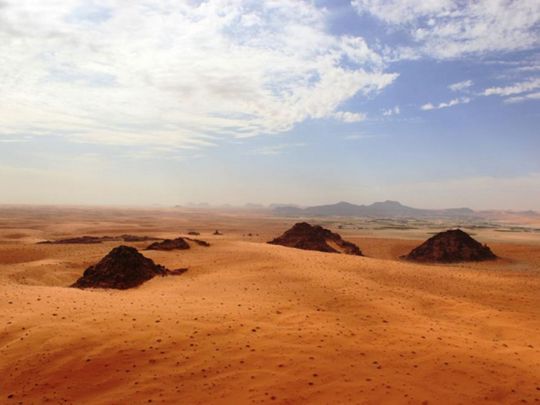
Abu Dhabi: New evidence has revealed that the desert regions of Saudi Arabia and the Arabian Peninsula were once fertile and green, drawing early humans and large animals such as hippos migrating from Africa to ancient lakes, local media reported.
Until a decade ago, the Arabian Peninsula was not on the map for scholars trying to reconstruct the story of early human evolution and movements outside Africa, until a study published in the scientific journal ‘Nature’ indicated that the region may have played an important role as a bridge between Africa and Eurasia.
“Arabia was not part of the story of early human migration because so little work had been done there before,” said study co-author Michael Petraglia, a Paleolithic archaeologist at the Max Planck Institute for the Science of Human History.
The research team included scientists from Saudi Arabia, Germany, Australia, the UK and elsewhere.
The impetus for a closer search for archaeological remains in the area came from satellite images that revealed traces of prehistoric lakes in today’s arid regions.
Analysis of sediment samples from ancient lakes and the remains of hippos and other animals showed that during many periods in the distant past, the peninsula hosted lakes and grasslands throughout the year.
“The flowing rivers and lakes, surrounded by grasslands, attracted animals and then the first humans who were after them,” Michael Petraglia said.
Hippos require year-round water surfaces several meters deep to survive,” he said, adding that the remains of other animals, including ostriches and antelopes, indicate “a strong biological link to northeastern Africa”.
Extensive excavations over a decade revealed stone tools from multiple periods of prehistoric settlement by early human groups, the oldest 400,000 years ago. Analysis of sediment samples from the ancient lakes and remains from hippos and other animals revealed that during several periods in the distant past, the peninsula hosted year-round lakes and grasslands.








